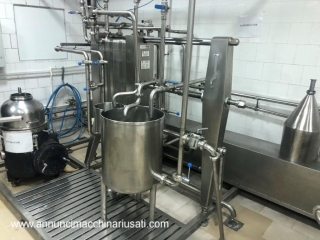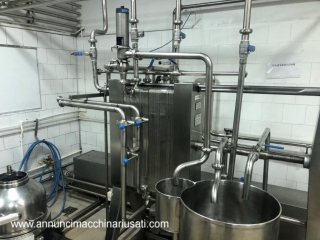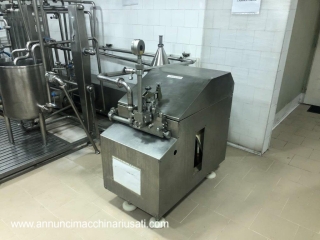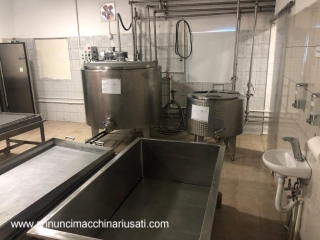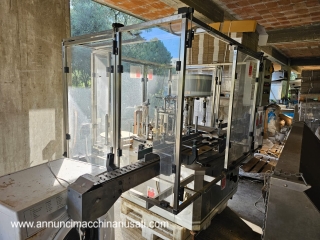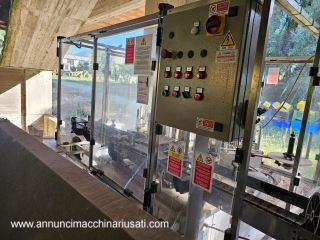Description
Used processing line for small packs of 2000 l/h reception and first milk conservation, the processing line used for small dairy products 2000 l/h begins with a milk reception unit consisting of two lactocongeling tanks and a reception pump. Initially, operators convey raw milk in the tanks, where it remains refrigerated. Consequently, the system guarantees thermal stability before processing. In addition, this configuration minimizes the bacterial charge by allowing continuous transfer to the pasteurization phase. Pasteurization and separation subsequently, the pasteurization phase uses a plate heat exchanger with retention section and auxiliary systems, all from 2,000 liters per hour. In particular, the pasteurizer quickly warms and maintains the milk at a predefined temperature to eliminate pathogens. Therefore, the separator Gea Westphalia, with a nominal power of 3,000 l/h, performs the separation of the cream. At the same time, the homogenizer Rannie (1,000 l/h) reduces fat blood cells, thus improving the stability of the emulsion and preventing the ascent of the cream. Fermentation and coagulation after thermal treatment, the milk proceeds to fermentation. Here, operators use a double wall isolated fermentation tank with a capacity of 1,000 liters and a planetary agitator. As a result, they maintain a uniform bacterial activity and precise temperature control. At the same time, a 1,000 -liter coagulation tank equipped with a planetary mixer starts the celler process. Both tanks guarantee optimal protein structuring for yogurt, cheese and fermented cream -based products. Processing and dripping of cheese after coagulation, the processing line used for small dairy products 2000 l/h continues with the processing of cheese. The system includes a 500 liter tank with a draining sieve and two cheese drains for cheeses. Therefore, operators can efficiently manage large volumes of curd. In addition, these components simplify the separation of the serum of milk while guaranteeing health compliance. In addition, their design supports easy cleaning and prevention of cross contamination. Packaging operations once the products are ready for "packaging, the line integrates semi -automatic and automatic solutions. First, a semi -automatic filler dose dose pasteurized milk in 1 liter bags. Subsequently, the filling for yogurt jars fills and automatically seals 75 mm cups and 95 mm up to 1,800 units all" now. In the meantime, the "Eticap rotary labeling machine (2004) applies both front and rear self -adhesive labels on cylindrical cups. It is important to underline that the machine guarantees constant alignment and" adhesion. Date coding, thermal control and final packaging also, a Videojet 1220 (2019) coding applies the expiry dates on each product via conveyor belt. More downstream, a vacuum packaging machine manages portions of cream and cheese. Thermal users include a 115-150 kW (2014) solid fuel boiler with double transfer pump. At the same time, an icy water tank (5,000 l, 2014) and a "cooling unit (2018) maintain the constant temperature throughout the line. Laboratory and accessories next to the processing units, the processing line used for small dairy products 2000 l/h has a dedicated laboratory. Specifically, it hosts analytical tools for quality control and milk analysis. In addition, the line includes 300 plastic boxes for storage and transport of yogurt jars. Finally, the arrest and storage of the system, the operators closed the line in September 2023. Before disassembly, they cleaned all the units and verified the mechanical conditions. As a result, all the equipment has been kept correctly. Therefore, any buyer can immediately reinstall the processing line used for small dairy products from 2000 l/h, without requesting a large renovation.



